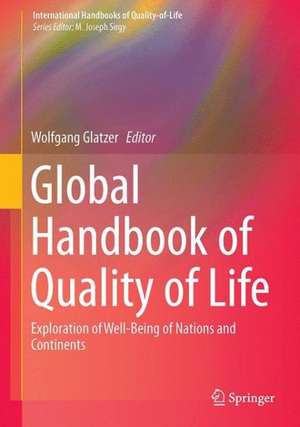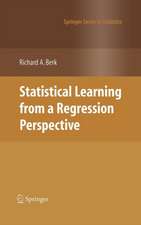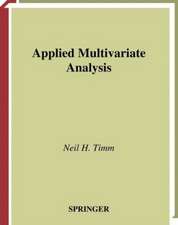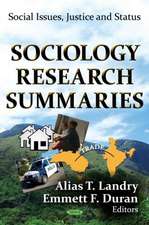Global Handbook of Quality of Life: Exploration of Well-Being of Nations and Continents: International Handbooks of Quality-of-Life
Editat de Wolfgang Glatzer, Laura Camfield, Valerie Møller, Mariano Rojasen Limba Engleză Hardback – 3 feb 2015
| Toate formatele și edițiile | Preț | Express |
|---|---|---|
| Paperback (1) | 3221.53 lei 6-8 săpt. | |
| SPRINGER NETHERLANDS – 12 oct 2016 | 3221.53 lei 6-8 săpt. | |
| Hardback (1) | 3230.86 lei 6-8 săpt. | |
| SPRINGER NETHERLANDS – 3 feb 2015 | 3230.86 lei 6-8 săpt. |
Din seria International Handbooks of Quality-of-Life
- 5%
 Preț: 1117.46 lei
Preț: 1117.46 lei - 5%
 Preț: 1614.88 lei
Preț: 1614.88 lei - 5%
 Preț: 2148.12 lei
Preț: 2148.12 lei - 5%
 Preț: 2131.48 lei
Preț: 2131.48 lei - 5%
 Preț: 1837.59 lei
Preț: 1837.59 lei - 5%
 Preț: 1131.36 lei
Preț: 1131.36 lei - 5%
 Preț: 591.29 lei
Preț: 591.29 lei - 5%
 Preț: 2136.39 lei
Preț: 2136.39 lei - 5%
 Preț: 2337.01 lei
Preț: 2337.01 lei - 5%
 Preț: 2896.40 lei
Preț: 2896.40 lei - 5%
 Preț: 2451.83 lei
Preț: 2451.83 lei - 24%
 Preț: 1837.26 lei
Preț: 1837.26 lei - 5%
 Preț: 1628.94 lei
Preț: 1628.94 lei - 5%
 Preț: 1633.89 lei
Preț: 1633.89 lei - 32%
 Preț: 1070.31 lei
Preț: 1070.31 lei
Preț: 3230.86 lei
Preț vechi: 3400.91 lei
-5% Nou
618.30€ • 671.38$ • 519.37£
Carte tipărită la comandă
Livrare economică 22 aprilie-06 mai
Specificații
ISBN-10: 9401791775
Pagini: 600
Ilustrații: XII, 894 p. 192 illus., 126 illus. in color.
Dimensiuni: 178 x 254 x 53 mm
Greutate: 1.77 kg
Ediția:2015
Editura: SPRINGER NETHERLANDS
Colecția Springer
Seria International Handbooks of Quality-of-Life
Locul publicării:Dordrecht, Netherlands
Public țintă
ResearchCuprins
Foreword; Alex C. Michalos and Wolfgang Zapf.- Chapter 1. Monitoring and Analyzing Global Quality of Life: An Introdution.- Part I. Long Term Trends of World Social Development: Health, Wealth, Democracy.- Chapter 2. Demographic and Health Development in the Long Run; Frank Swiaczny.- Chapter 3. Living Standards in a Modernizing World: A Long Run Perspective on Material Well-Being and Human Development; Herman de Jong.- Chapter 4. Wars and Violence through the Centuries; Mathias Boes and Hinrich Rosenbrock.- Chapter 5. The Worldwide Spread of Democracy; Robert K. Schaeffer.- Part II. Monitoring Global Well-Being: Objective and Subjective Measurement: Objective Approaches.- Chapter 6. Global Economic Accounting and its Critics; Jürgen Faik.- Chapter 7. The human Development Index; Kenneth C. Land.- Chapter 8. The Index of Social Progress; Richard J. Estes.- Part II. Monitoring Global Well-Being: Objective and Subjective Measurement: Subjective Approaches.- Chapter 9. The Overall Satisfaction with Life; Ruut Veenhoven.- Chapter 10. Multi-Item Measurement of Subjective Well-Being; Robert A. Cummins and Melissa K. Weinberg.- Chapter 11. The Affect Balance Scale; Norman Bradburn.- Part III. Socio-Economic Structures of Well-Being.- Chapter 12. Happiness and Economic Growth: The Evidence; Richard A. Easterlin.- Chapter 13. Well-Being and Sustainable Consumption; Monica Guillen and Harold Langford Wilhite.- Chapter 14. Poverty and People’s Well-Being; Mariano Rojas.- Chapter 15. Well-Being and the Labor Market from a Global View: It’s not just the Money; Duncan Campbell and Roger Magi Gomis Porquet.- Chapter 16. The Contributiion of Unpaid Work to Global Well-Being; Maria-Angeles Duran.- Chapter 17. Welfare Production and Quality of Life; Michael Dauderstädt.- Part IV. Social Structures of Well-Being.- Chapter 18. Living Alone and Living Together: Their Significance for Well-Being; Liz Eckermann.- Chapter 19. Worldwide View of Child Well-Being; Vicki L. Lamb and Kenneth C. Land.- Chapter 20. Global Perspective on Quality in Later Life; Fermina Roja-Perez, Gloria Fernandez-Mayoralas and Vivente Rodriguez-Rodriguez.- Chapter 21. Migration and Quality of Life in the Global Context; David Bartram.- Part V. Well-Being in Nations and at Continents.- Chapter 22. Quality of Life and Well-Being in North-Africa: Algeria, Eqypt, Libya, Morocco and Tunisia; Habib Tiliouine.- Chapter 23. Shadow of the Sun: The Distribution of Well-Being in Sub-Saharan Africa; Benjamin J. Roberts, Steven L. Gordon, Valerie Møller and Jarè Struwig.- Chapter 24. Well-Being in Canada; Simon Langlois.- Chapter 25. Quality of Life in the United States; Rhonda Philips.- Chapter 26. Argentina’s Economic Development and Life Satisfaction Revisited: 1984-2012; Martin Tetaz, Pablo Schiaffino and Miguel Braun.- Chapter 27. Multiple Modes of Well-Being in Asia; Takashi Inoguchi.- Chapter 28. The Distribution of Quality of Life in Australia; Melissa K. Weinberg and Robert A. Cummins.- Chapter 29. An Overview of Quality of Life in Europe; Daphne Ahrendt, Hans Dubois and Erika Mezger.- Chapter 30. Well-Being in Slovakia; Jozef Džuka.- Chapter 31. From Dissonance to Wellbeing and Adaption? Quality of Life in Switzerland Over the Past Decades; Christian Suter, Katia Iglesias and Jehane Moussa.- Chapter 32. Living Conditions and Perceived Quality of Life Among Indigenous Peoples in the Arctic; Birgir Poppel.- Part VI. Social Reporting on Well-Being in Supranational Organizations.- Chapter 33. Well-Being and Quality of Life Reporting at the OECD; Romina Boarini.- Chapter 34. The World Health Organization: The Case for Measuring Wellbeing in Europe; Claudia Stein and Ritu Sadana.- Chapter 35. Social Reporting of the European Union: Description of the Organization; Marleen De Smedt.- Chapter 36. Well-Being for All – The Aim of Social Cohesion: Developing the Approach at the Council of Europe; Gilda Farell.- Part VII. Basic Dimensions of Global Well-Being.- Chapter 37. Assessing the Subjective Wellbeing of Nations; Filomena Maggino.- Chapter 38. Cultural Construal of Wellbeing: Theories and Empirical Evidence; Yukiko Uchida, Yuji Ogihara and Shintaro Fukushima.- Chapter 39. Satisfaction and Happiness: The Bright Side of Quality of Life; Louis Tay, Lauren Kuykendall and Ed Diener.- Chapter 40. Worries and Pain: The Dark Side of Quality of Life; Wolfgang Glatzer.- Chapter 41. Hopes and Fears: Future Views of Quality of Life; Jennifer Gulyas.
Notă biografică
Wolfgang Glatzer from the Goethe-University Frankfurt am Main was engaged in quality of life and social indicators research during all the time of his professional life. His interest was also directed toward monitoring social change and analysing welfare and progress.
Textul de pe ultima copertă
This handbook provides a comprehensive historical account of the field of Quality of Life. It brings together theoretical insights and empirical findings, and presents the main items of global quality of life and wellbeing research. Worldwide in its scope of topics, the handbook examines discussions of demographic and health development, the spread of democracy, global economic accounting, multi-item measurement of perceived satisfaction and expert-assessed quality of life, and the well-being of children, women and poor people. It looks at well-being in specific regions, including North and Sub-Saharan Africa, Asia, South America, and Eastern and Western Europe. In addition to contributions by leading and younger authors, the handbook includes contributions from International Organizations about their own work with respect to social reporting.
Caracteristici
Presents clues to complex problems and empirical materials
Leads to more comprehensive picture of global quality of life and well-being than we had before
Descriere
The centuries-old question of the “wealth of nations” was in the past decades more and more challenged by the question of the “well-being of nations”. What is the outcome of human activities in terms of improving the quality-of-life of countries and continents. In the context of quality-of-life-research different methods and procedures were developed to monitor the well-being of nations. Transcending traditional methods objective and subjective indicators were taken into account. The development of different approaches shows that no single indicator comes out as a unique one. What are the good and the bad countries is shown with batteries of quality-of-life-indicators. Principally the state of each nation can be evaluated from the perspective of social experts and from the perspective of the whole population which is measured in representative approaches.Main guiding questions are the relationship of well-being to economic growth and of well-being to sustainability. The inequality of well-being in a global world is under question in respect to developed and developing countries and within the nations depending on various types of welfare states.


















